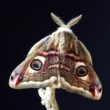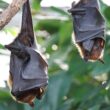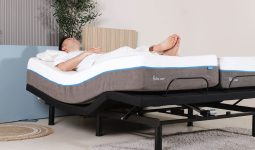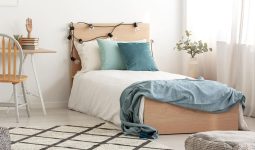When you think of insects living in your bed, the first thing that comes to mind might be bed bugs.
However, insects can make themselves at home in your mattress and bedding.
In this blog post, we will examine some of the common types of insects that live in beds and how to keep them away.
1. Fleas
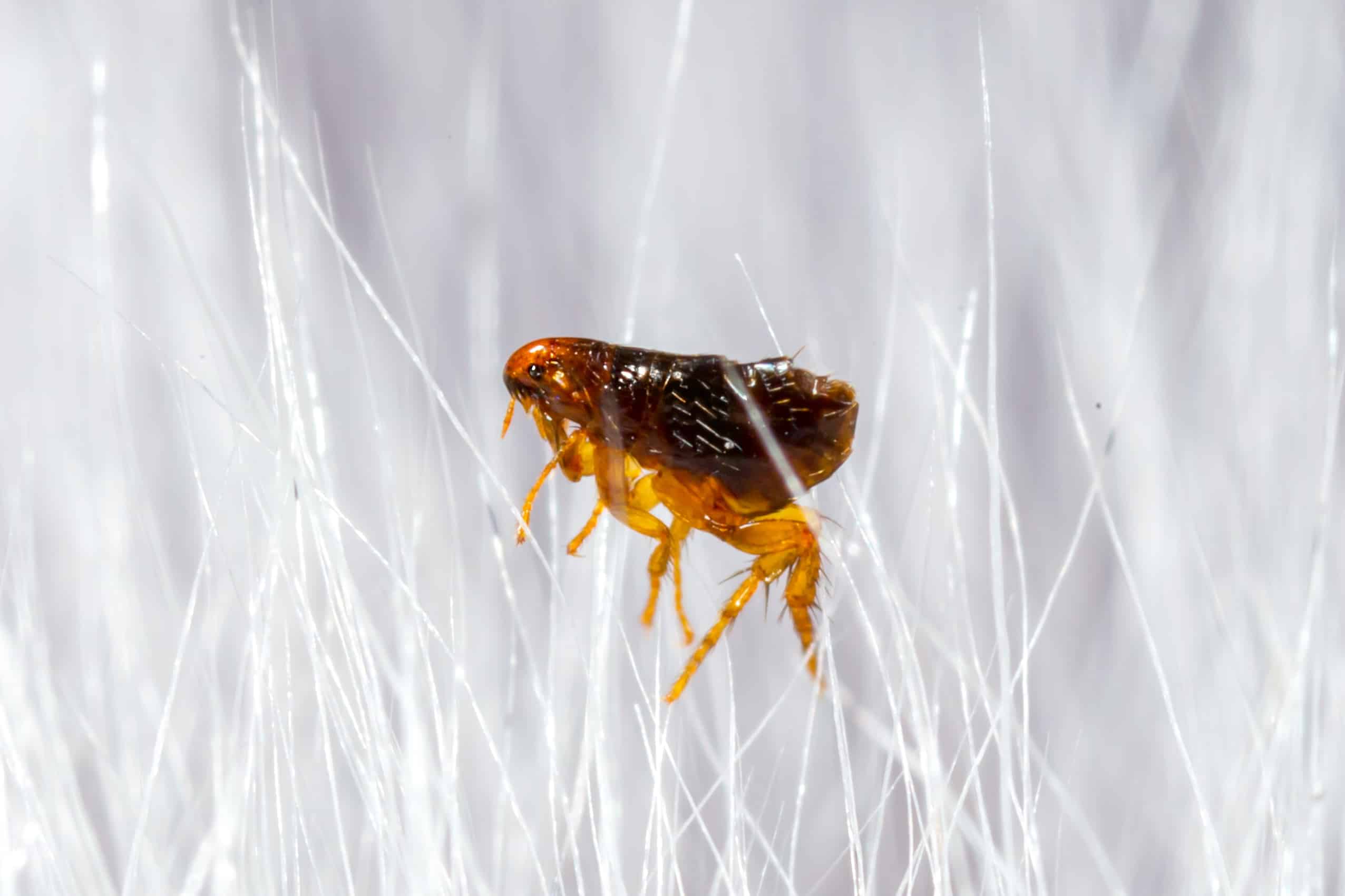
Fleas are small, dark-colored parasites that feed on the blood of humans and other animals.
They are the most common insects in beds, carpets, furniture, and clothing.
Fleas lay eggs in these places and can quickly become a major problem in your home if left unchecked.
Adult fleas are typically 1/6th of an inch long and are brown or black. They have a hard outer shell and six legs.
Fleas are known to jump up to eight inches and can travel from one place to another quickly.
Flea infestations in the home can cause health problems for humans and pets alike, as the insects can spread illnesses such as tapeworms and bacterial infections.
To prevent flea infestations in your home, keep carpets and furniture vacuumed regularly and bathe your pets often.
Use pet flea treatments that contain insecticides to kill fleas quickly and efficiently.
Also, limit areas where your pets sleep or play to prevent fleas from spreading around the house.
2. Bedbugs
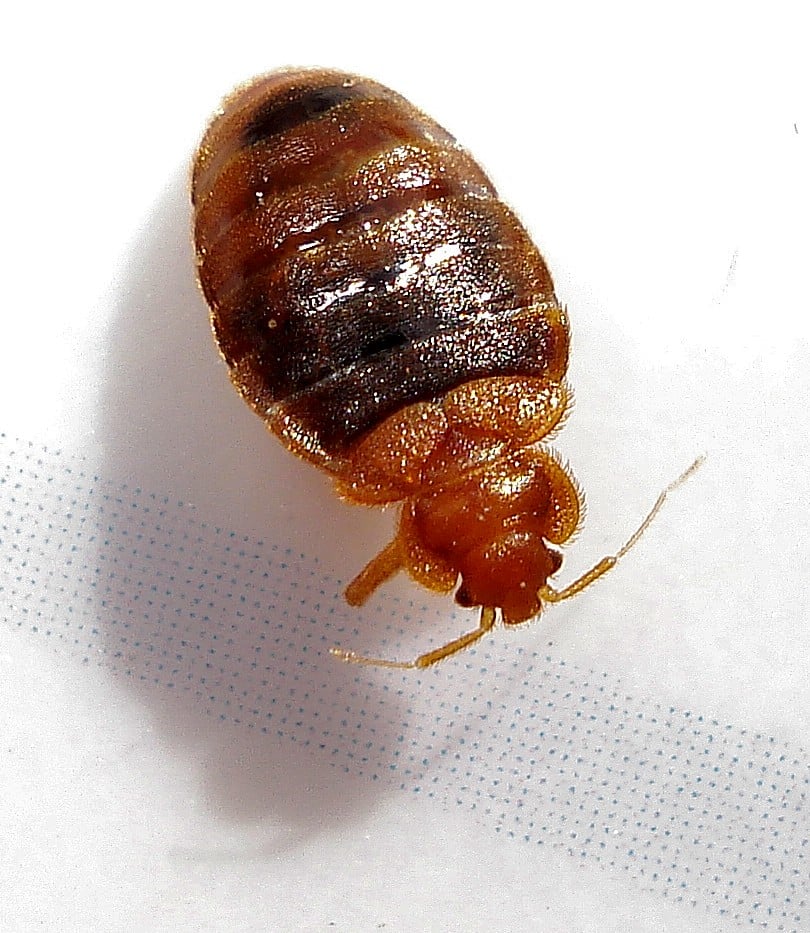
Bedbugs are small, oval-shaped insects that feed on the blood of humans and other warm-blooded animals.
They are one of the most common types of insects that live in beds.
Bedbugs typically hide in cracks and crevices during the day and come out at night to feed.
They can be found in mattresses, bed frames, headboards, footboards, box springs, and other furniture around the bed.
Bedbug bites look like small red bumps or welts, and they can cause itching and swelling. They usually appear in a line or group of three.
If you think you may have bedbugs, you should inspect your bedding, mattresses, and furniture for signs.
To get rid of bedbugs, use insecticides specifically designed to target bedbugs.
Vacuuming the mattress and surrounding area is also important to remove any remaining eggs or insects.
3. Carpet Beetles

Carpet beetles are small, black-and-white insects living in beds, furniture, and carpets. They have six legs and vary in size from 1/16 to 1/8 of an inch.
Carpet beetles are attracted to the warm, dark places in your home, making your mattress a prime spot for them to live.
These pests feed on pollen, pet dander, and hair, making them especially problematic if you have pets.
Regularly vacuum and steam clean your bedding and furniture to prevent carpet beetles from infesting your bed.
Regularly inspect your mattress for signs of infestation and remove any debris or debris-filled fabrics harboring these insects.
You should also wash any clothes and fabrics that come into contact with your bedding regularly to get rid of potential pests.
4. Bat Bugs
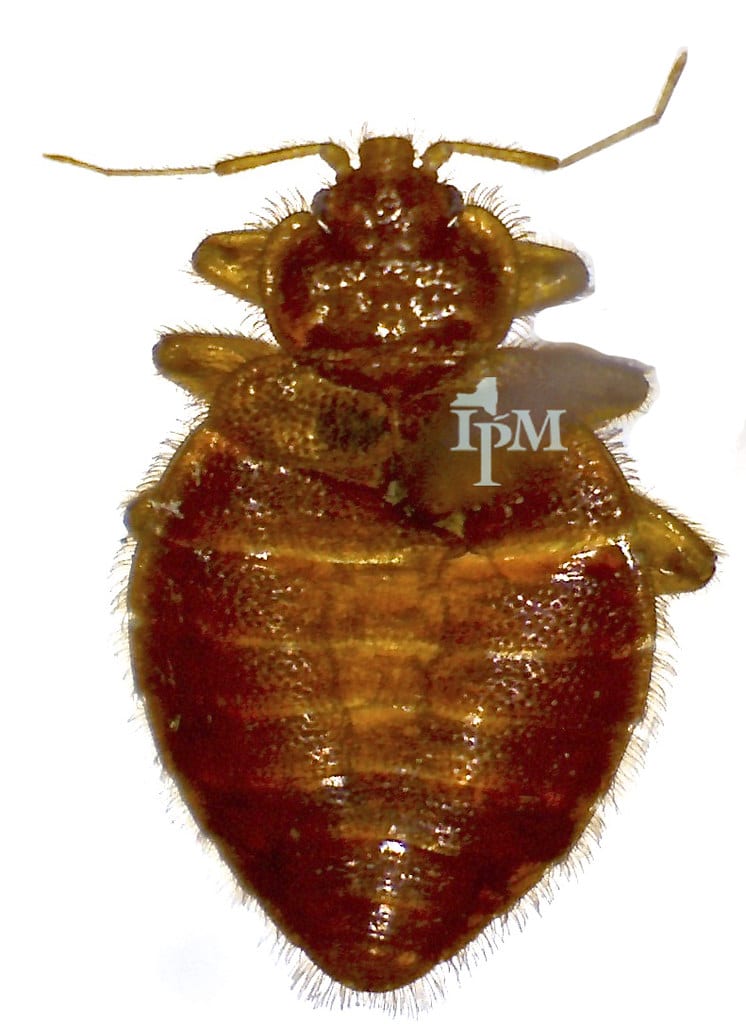
Bat bugs, known as Cimex adjuncts, are parasites in homes worldwide.
They are closely related to bedbugs but feed exclusively on the blood of bats.
Bat bugs may accidentally find their way inside homes when bats roost in an attic or wall void. Bats do not prefer to feed on humans, but will if necessary.
Bat bugs are small, flat insects that live in beds. They are oval in shape and reddish-brown in color.
They have long antennae, and their bodies are covered in short hairs. Unlike bedbugs, they lack wings and have longer legs.
Unlike bedbugs, bat bugs are not known to be a problem for homeowners.
They typically don’t survive long away from a bat host, so you won’t see any bat bugs unless there is a persistent infestation of bats in the home.
But if you do see them, contact a professional pest control expert for assistance.
5. Spider Beetles
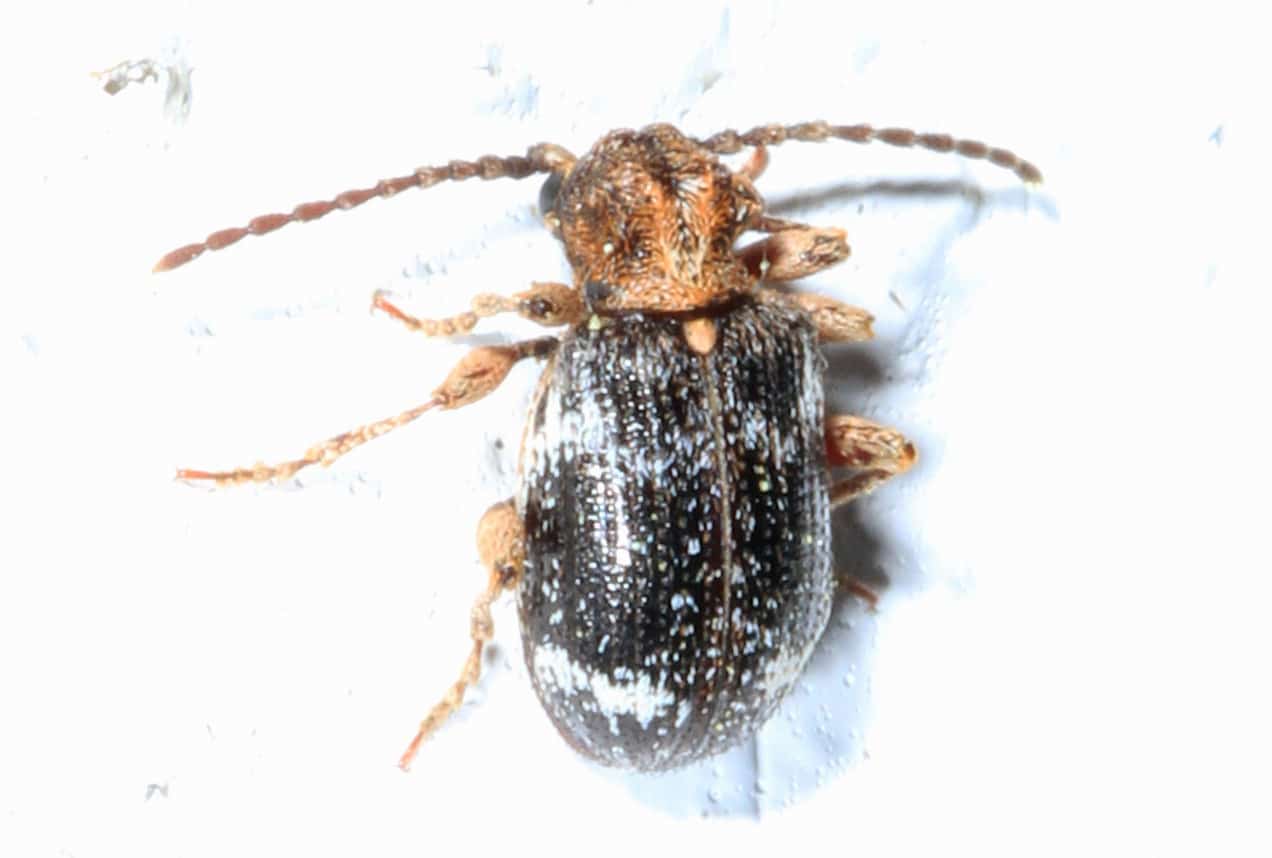
Spider beetles are another one of the insects living in beds.
They can range in size from 1 to 8 millimeters and come in brown, reddish-brown, black, or mottled colors. Like other beetles, they have six legs and two antennae.
Spider beetles get their name by moving around like spiders, walking sideways or backward.
They are usually found in stored food products but can inhabit mattresses and pillows, feeding on lint and other fibers.
Signs of a spider beetle infestation include seeing the insects and finding small holes in fabric items like mattresses and pillows.
While their presence is usually more annoying than harmful, if left untreated, they can cause significant damage to fabrics and other materials.
To prevent spider beetles from occupying your bed, it’s important to keep your mattress clean and vacuum regularly.
It’s also beneficial to store any fabric items like blankets and pillows in airtight containers and regularly check for signs of an infestation.
6. Booklice
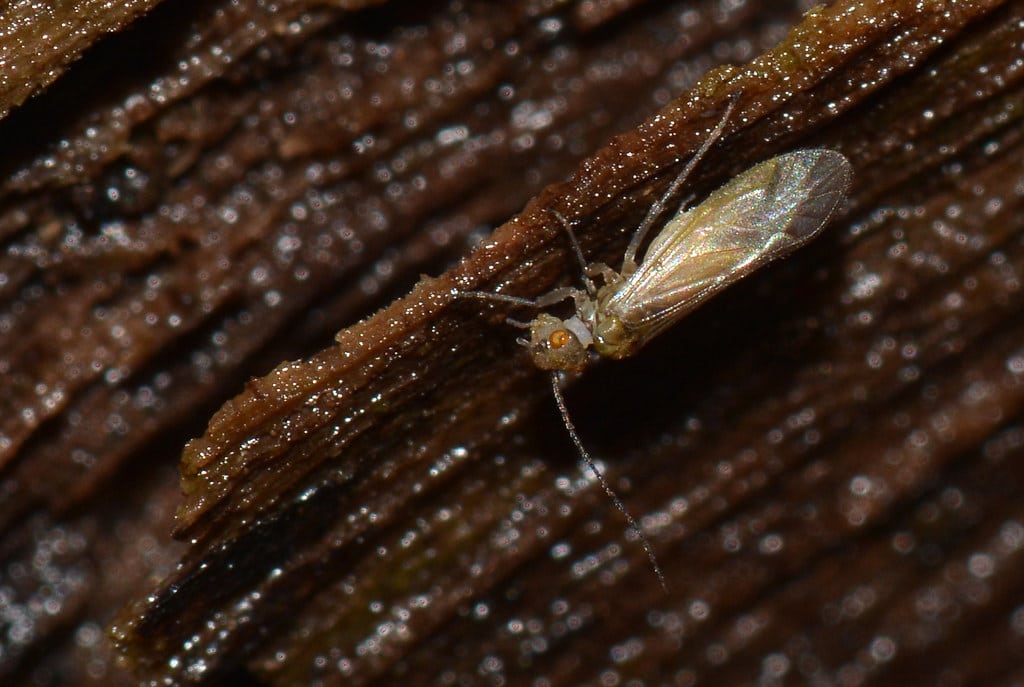
Booklice, also known as Psocids, are small, soft-bodied insects that live in beds.
They feed mainly on molds and fungi but eat starch and glue from book bindings or other paper products.
They’re usually found in humid places like bathrooms or laundry rooms, but can end up in your bed if they see an ample food source there.
Booklice look like tiny, pale lice, but they’re not related. They’re generally less than a millimeter long, making them difficult to spot.
However, they can congregate in large numbers and leave behind a speck of fine powdery dust that can be seen with the naked eye.
Booklice are harmless to humans and pets. They don’t bite, transmit disease, or cause any lasting damage to structures.
While they won’t harm you directly, they can still be a nuisance and should be dealt with to keep them from multiplying.
Keep humidity levels low and practice good hygiene with all paper materials to prevent booklice from entering your home.
If you have an infestation of booklice, vacuuming and using a pesticide specifically designed for controlling them can help eliminate them.
7. Swallow Bugs
Swallow bugs are insects that live in beds, specifically those near bird nests or roosting areas.
They belong to the family of insects known as ‘Psychodidae’ and are usually dark brown or black.
Swallow bugs are considered nuisance pests as they feed on blood from humans and other warm-blooded animals.
They can bite people and cause skin irritations, especially when living in mattresses, box springs, and bedding.
Check your bed regularly for signs of these bugs to prevent an infestation and keep bird nests away from your home.
8. Silverfish
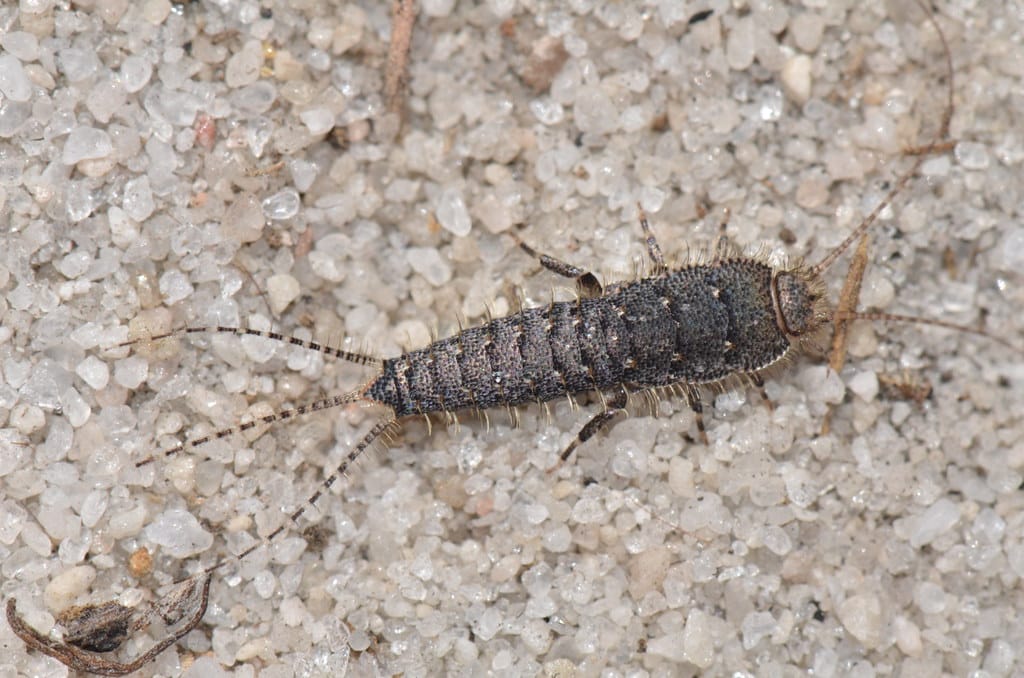
Silverfish are small, flat, and silver-colored insects that live in humid areas around the house.
They feed on proteins like flour and other carbohydrates but can survive without food for long periods.
Silverfish tend to be nocturnal and hide in dark crevices during the day. Their presence can indicate excess humidity.
These insects thrive in damp environments, such as bathrooms and laundry rooms, but they can also enter the bedroom if enough moisture is present.
Keeping your bedroom dry and free of food particles is important to prevent silverfish infestation.
Vacuum regularly, seal cracks and crevices in walls, and keep your mattress off the floor.
You can also use insecticides to eliminate any silverfish that may already be present in your bedroom.
9. Minute Brown Scavenger Beetle
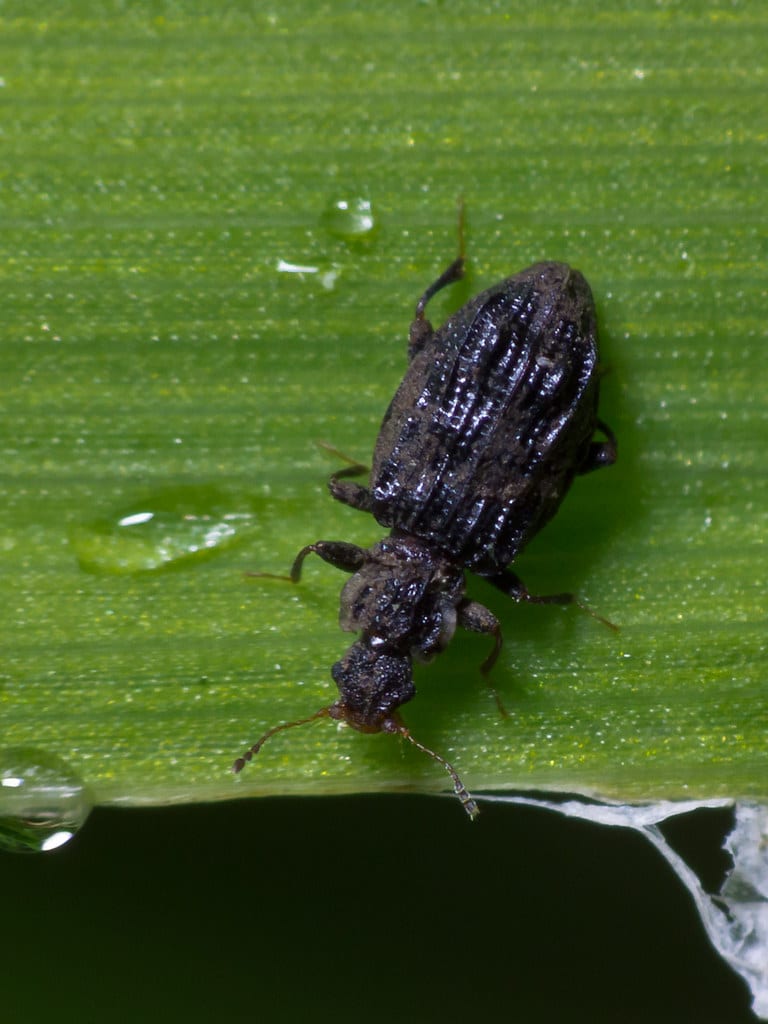
The Minute Brown Scavenger Beetle is an insect that lives in beds. It is found in the crevices and cracks of your mattress, box spring, and bed frame.
This insect is approximately 1/10 inch long and has a dark brown coloration with dark lines on its body.
Its scientific name is Anthrenus verbasci, and it belongs to the Dermestidae family.
The Minute Brown Scavenger Beetle typically feeds on organic debris, and the larvae feed on the hair, carpet fibers, lint, and other debris that can accumulate in mattresses.
They have even been known to feed on dead insects and spiders.
These beetles may become more active during the warmer months when the temperatures rise.
To help prevent an infestation of Minute Brown Scavenger Beetles in your bedroom, regularly clean your mattress and bedding, and vacuum any carpets.
If you find an infestation, contacting a pest control professional is best to help eliminate it.


